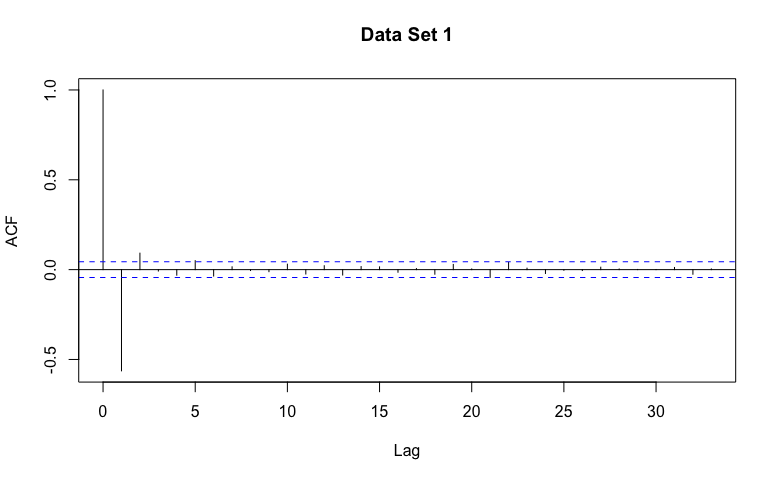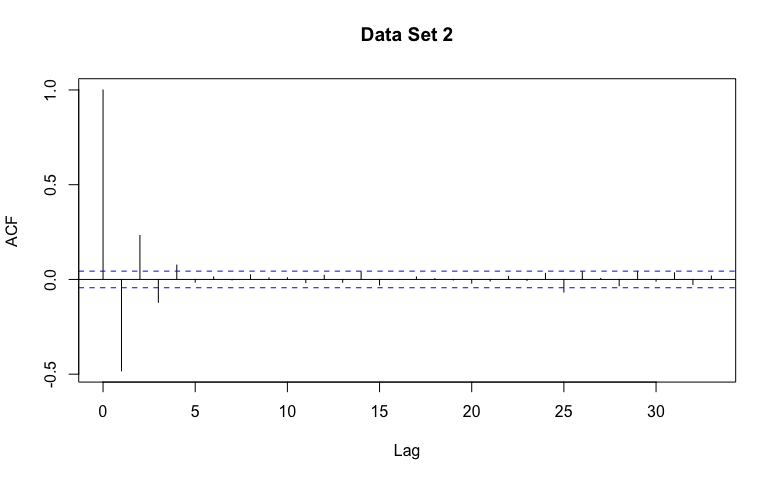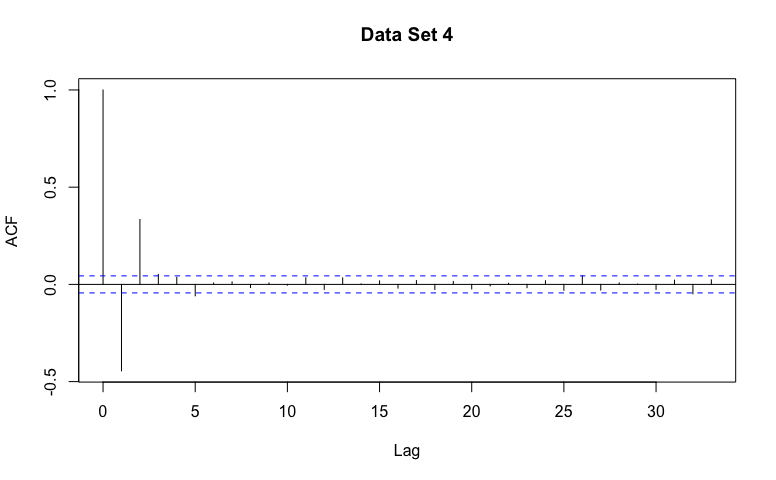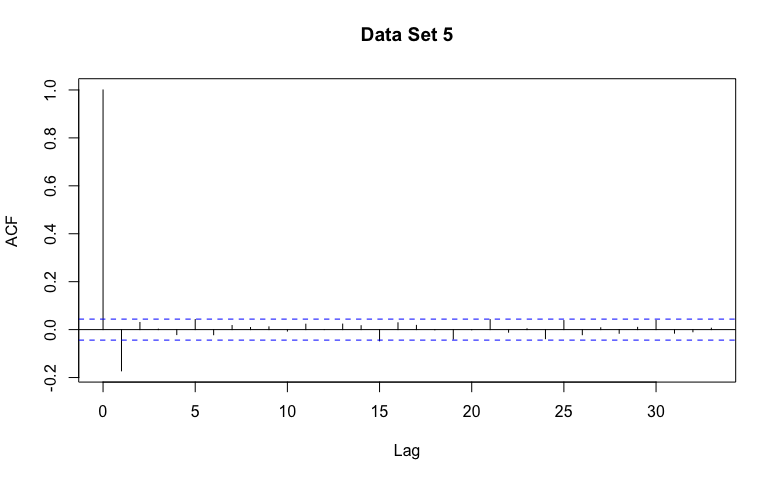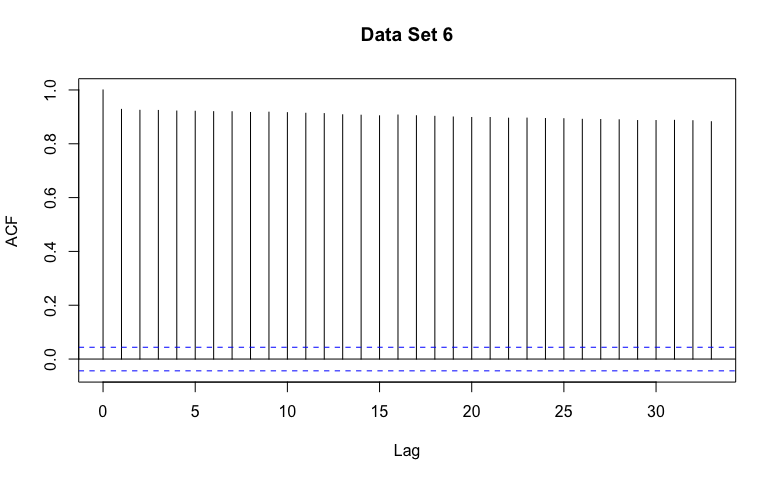7 AR and MA Models
Learning Goals
- Understand the derivations of variance and covariance for the AR(1) and MA(1) model.
- Understand the notation for an AR(p) and MA(q) models and the general mathematical approaches for deriving variance, covariance, and correlation.
- Recognize general patterns of non-stationarity, AR(p) models, and MA(q) models in example ACF graphs.
Group Theory
Working at the board, work through an alternative derivation for the AR(1) model.
Explicitly discuss with your partner how you’d like to collaborate today. It is your responsibility to make sure both you and your partner understand the derivation and that you are positively supporting each other in the process.
AR(1)
- Write down the model for an AR(1) Model.
\[Y_t = \]
- Rewrite the model by iteratively plugging in the value from the model for \(Y_{t-1}\) and then \(Y_{t-2}\). Keep going, to write \(Y_{t}\) as \(\sum^{\infty}_{k=0} \phi_1^k W_{t-k}\) allowing the time indices to range from \(-\infty,...,-3,-2,-1,0,1,2,3,...,\infty\)
For 7-8, use the infinite geometric series, \(\sum^{\infty}_{k=0} r^k = (1-r)^{-1}\text{ if }|r|<1\).
Find the Expected value of \(Y_t\).
Find the Variance of \(Y_t\).
Find the Covariance of \(Y_t\) and \(Y_{t-h}\).
